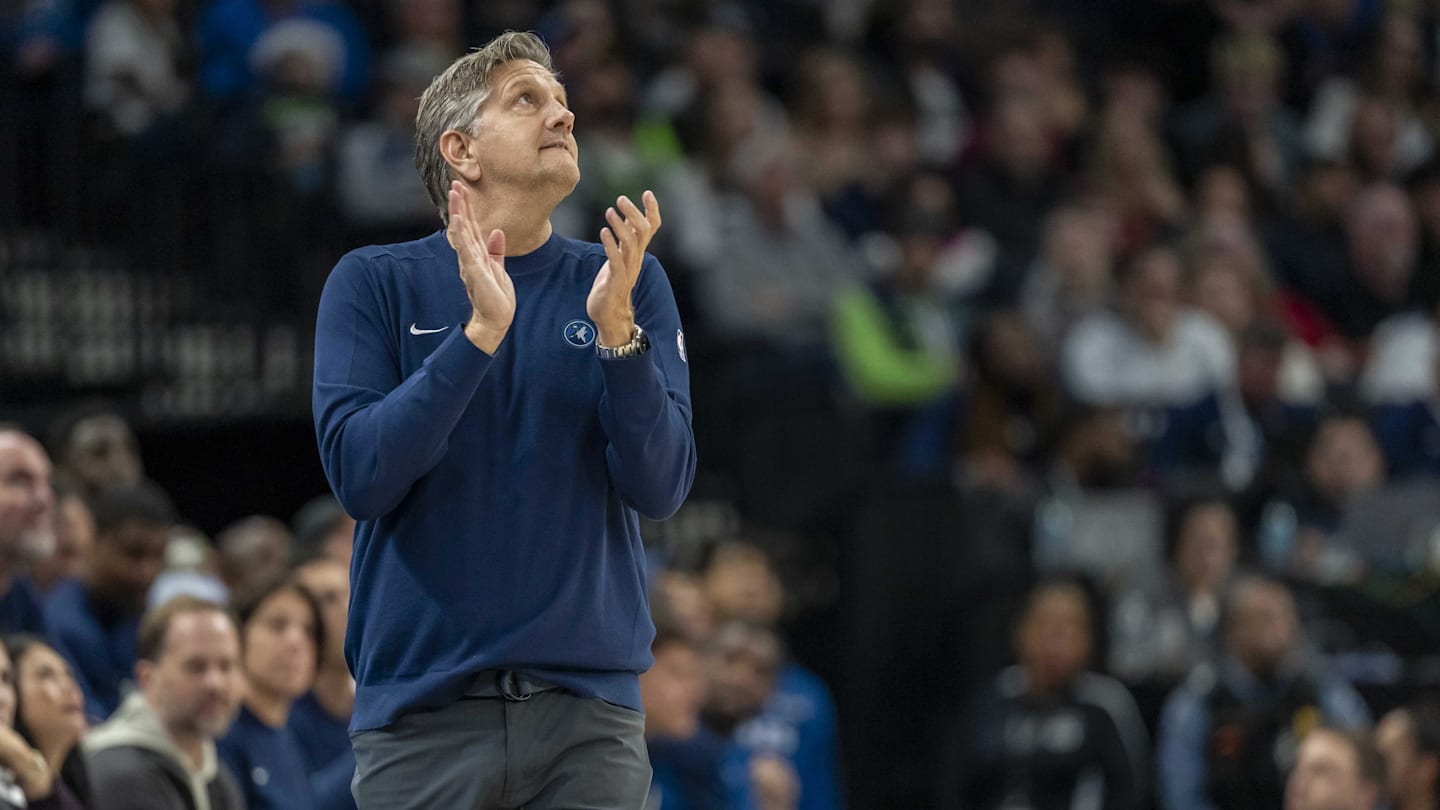The Timberwolves opened the second quarter of Sunday night’s game against the San Antonio Spurs on a 13-0 run.
That wasn’t totally unusual; Minnesota’s second unit has often been a driver of the team’s success this season. But the composition of the lineup Timberwolves coach Chris Finch utilized Sunday night is a group that’s only been showcased in recent weeks. The lineup features Julius Randle, Donte DiVincenzo, Nickeil Alexander-Walker, Naz Reid and Josh Minott.
Sunday night, that group moved the ball with pace. Minott started the run with a dunk, DiVincenzo hit a 3-pointer and used a pretty move two possessions later to get to the rim for a layup. Alexander-Walker got in on the action, knocking down a 3, and Minott drilled another from deep as an eight-point deficit at the end of the first quarter turned into a five-point lead.
That run jumpstarted a second quarter in which the Wolves outscored the Spurs 32-12. They had a 12-point lead at the break, and Minnesota needed all of that cushion as it held off the Spurs for a narrow 112-110 victory at Target Center.
That lineup, which also started the fourth quarter on Sunday, is quickly becoming a go-to option for Finch and is part of a greater strategy to split some of the minutes for Randle and Anthony Edwards. Randle, DiVincenzo, Alexander-Walker, Reid and Minott have only made appearances together in eight games, but they’re already the eighth-most used five-man lineup by minutes for the Wolves — and they’re also already one of the team’s most successful five-man groupings.
They are scoring 126.1 points per 100 possessions, better than any of Minnesota’s five-man lineups that have seen at least 20 minutes together this season, while posting a defensive rating of 97.8, about middle of the pack of those groups. That equates to a 28.3 net rating, which is also the best of any group that’s seen at least 20 minutes together this year.
Finding opportunities to split minutes for Randle and Edwards wasn’t an easy task. It required Finch to turn away, at least for now, from one of his most successful lineups, one that he typically used to start the second and fourth quarters featuring Alexander-Walker, DiVincenzo, Reid, Mike Conley and Rudy Gobert. That group has a net rating of 26.6, which is better than any of the regularly used five-man lineups, except for the newfound grouping.
“We tried to protect that lineup that started the second and fourth quarters for a long time, so we had to take a bet that breaking up (Edwards) and (Randle) was going to also pay off, but you can’t do both of them together, it’s kind of hard,” Finch said. “A lot of these things, they are mutually exclusive … it keeps you from being able to do another.”
Finch’s bet of playing Randle with the second unit is paying off. It allows him room to operate when the spacing of the starting unit often does not. The lineup Finch used to start the second and fourth quarters Sunday in particular is clicking. Randle said it allows him to play as a point forward. The lanes are clear and he’s surrounded by shooters to kick out to.
It’s also a group that can play fast, with every player capable of pushing the ball. They’re good cutters, too. It also pairs together Randle and DiVincenzo, and both benefit from the chemistry they’ve built in New York. They’ve both been finding their rhythm lately; DiVincenzo has scored in double figures in each of the last three games — all Wolves wins — including back-to-back games of 20-plus. Randle is averaging 22 points, 7.3 rebounds and 6.7 assists over that same stretch, all better than his season averages.
It’s also spurring along the development of Minott, whose minutes have been limited this season but been growing over the last stretch of games. Minott has played in each of the last seven games, logging over 10 minutes in three of those. He appears to be claiming the ninth spot in the rotation, and Finch had no shortage of praise for him after Sunday’s victory.
“With (Minott), he just gives us a cutting dynamic, he gives us activity, he gives us length,” Finch said. “He gives a bit of a guy who gets his hands on the ball, offensive rebounds, that type of thing, and he’s been shooting the ball really well all season, in practice and everything, so gives us a bit of a threat there. And just waiting for the game to come to him, so gives us a transition runner.”
It was always going to take time. Finch is beginning to fit the puzzle pieces together for the Wolves.










